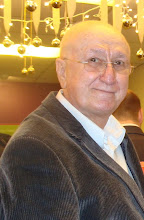
It's an unusual day. A fairly strong wind is blowing off the Lake onto the shore lifting large waves that crash into the beach at the foot of the Scarborough Bluffs.
I'm taking Lindsay to Sylvan Park for her morning run because these conditions are too special to waste. Sylvan is located mid way along the ten kilometer length of the Bluffs at the end of Sylvan Drive deep in the heart of Guildwood Village.
If you don't know the park is there, you'll never find it in the maze of suburban streets. The bluffs are much taller here, close to their 90 meter maximum. And from the top of the bluffs on days when a strong wind blows onto the shore you can still see her in the troughs of the waves.
Her great boiler and some of her decking are all that's left of the Alexandra. And those are usually hidden just below the surface of the Lake.
On Tuesday August 3rd, 1915, the 49 year old Alexandria was bound for Toronto when she ran into a massive storm. Capt. Bloomfield was steaming for the safety of the Toronto harbour hoping that the old wooden side wheeler would hold together long enough to survive. With only 300 tons of cargo aboard, she was riding high in the water and was easy prey for the raging wind and the heavy seas.
Her 50 horsepower was simply not enough to hold her on her course and she was pushed further and further towards the lee shore with each battering wave. Although the light of Toronto's Eastern Gap was in sight, she finally lost her battle and the old ship rammed onto the sands at the base of the Scarborough Bluffs.
Alerted by the forlorne peal of the ship's horn, the top of the bluffs was soon lined with spectators leaning into the savage wind and rain to watch the 173-foot, 863-ton Alexandria's fight to the death. They didn't have long to wait.The crushing seas soon began to dismantle the vessel and once she started to go it didn't take long.
The hull began to break up about 8:00 p.m. when about 50 feet of the bow broke off. The terrified crew then took to the boats but the waves were vicious and all twenty-two of her crew were tossed into the churning waters. Clinging to lifelines rigged from the beach, and with the help of those on shore, all the men reached safety by midnight. No sooner had the last man reached shore, than the stern section of the ship tore away from the wreck and broke up.
The following morning winds had died down and the lake quieted. The wreckage lay scattered along the shoreline. I still find pieces of it even today. What was left of the Alexandria had been pushed very close inshore during the night and now she lay facing in a westerly direction and listing over on her port side. The cabin had been badly smashed by the waves and the top section of the funnel had disappeared over the side.
Her cargo of pickles, canned vegetables, potatoes and sugar had been washed away and residents along the shore as far west as Ward's Island stocked their shelves for the winter with supplies from the stricken steamer. Quite a few sheds were also built that year from her planking.
Succeeding storms soon broke up what was left of Alexandria's woodwork and all that remained above water was the walking beam and the upper portion of the boiler, these being quite visible, especially at times of low water. For over twenty years these relics were a feature of the eastern shoreline. For many years the local children used the walking beam as a diving platform.
But in due course, with the high water and the erosion of the shoreline, the last visible remains of Alexandria disappeared from sight and local residents were left with their memories of the stormy night that "Alex" came ashore. And a few jars of pickles.
But it isn't only on days like today that she still comes alive again, fleetingly glimpsed between the waves, the ghost of another time and another era. No there is more to her story than that.
Linsdsay hovers near the snow covered edge of the bluffs, barking down at the remnants of the ship as if spooked. And perhaps she is, because it wasn't many years after the Alexandria went to her watery grave crushed and smashed by the savage waves, that her great paddle wheels were seen prowling the waters of the Great Lakes again.
But that is a story for tomorrow.
+++++++++++++++++++++++++++++++++++++++++++++++++++++++++
Photo courtesy of Photobucket
2026 Project 365 – Week Three
1 day ago



